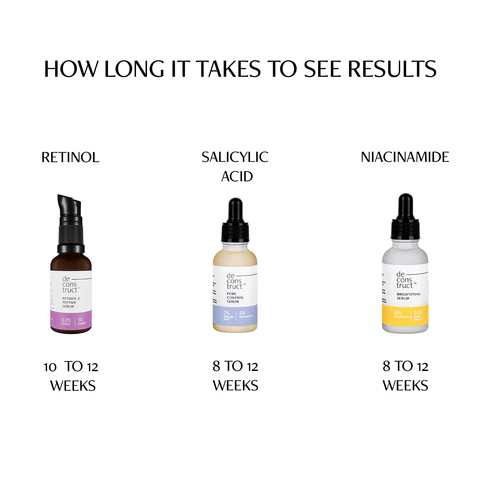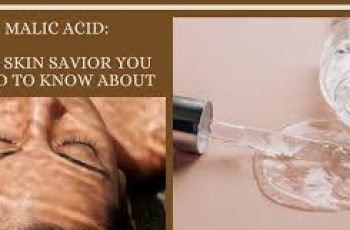
**Can You Mix Niacinamide and Retinol?**
Yes, you **can** mix **niacinamide** and **retinol**, and in fact, combining them can be a very effective way to address multiple skin concerns, from fine lines and acne to pigmentation and uneven skin tone. While these two ingredients are often seen as *potent powerhouses* for your skin, the good news is that they complement each other quite well, and many dermatologists recommend using both in your skincare routine. Here’s everything you need to know about how to use them together effectively.
### What’s Niacinamide?
Niacinamide, also known as **vitamin B3**, is a multifunctional ingredient with many skin benefits, including:
– **Anti-aging**: It helps reduce the appearance of fine lines and wrinkles by boosting the skin’s moisture levels and enhancing elasticity.
– **Anti-inflammatory**: Niacinamide can calm the skin, making it ideal for those with conditions like **rosacea**, **eczema**, and other inflammatory skin concerns.
– **Improves skin texture**: It helps regulate the skin’s sebum production, reducing **acne** and **breakouts** while improving skin texture and tone.
– **Repairs sun damage**: Niacinamide helps to fade **hyperpigmentation** and **sun spots**, leaving skin looking more even and radiant.
– **Hydration boost**: It draws moisture into the skin and strengthens the skin’s natural barrier, preventing dehydration and improving overall skin health.
### What’s Retinol?
Retinol, a form of **vitamin A**, is another superstar ingredient, particularly known for its **anti-aging** and **acne-fighting** properties. Some of its main benefits include:
– **Promotes cell turnover**: Retinol speeds up the skin’s natural cell cycle, leading to fresher, smoother skin. This makes it excellent for **uneven texture** and **dullness**.
– **Reduces fine lines and wrinkles**: By stimulating collagen production, retinol can help reduce the appearance of fine lines, wrinkles, and sagging skin over time.
– **Fights acne**: It helps to regulate **sebum production** and prevent clogged pores, which can result in acne breakouts.
– **Brightens the skin**: Retinol also works on **hyperpigmentation**, dark spots, and **sun damage**, promoting an even skin tone.
### How to Use Niacinamide and Retinol Together
While niacinamide and retinol offer complementary benefits, it’s important to layer them correctly to avoid irritation and make sure your skin gets the most out of both. Here’s how to effectively incorporate them into your routine:
#### **1. Use Niacinamide First, Then Retinol**
If you’re using both ingredients in separate products (rather than a pre-formulated combination), the general rule is to apply **niacinamide first**, followed by **retinol**. Here’s why:
– **Niacinamide first**: Niacinamide helps **protect the skin barrier**, which is especially important if you’re using retinol, as retinol can sometimes cause dryness or irritation, particularly for sensitive skin. Niacinamide helps soothe the skin, providing a barrier against these effects.
– **Retinol second**: Since retinol is a potent active ingredient that works deep within the skin, it should be applied after niacinamide. This allows it to penetrate effectively without being hindered by other ingredients on top.
#### **2. How Long to Wait Between Applications**
Many people ask, “How long after applying niacinamide can I apply retinol?” The good news is that you don’t need to wait long. **About 5 minutes** should be sufficient for niacinamide to absorb and prepare your skin for retinol. This small window ensures that both products can do their job without interfering with each other.
#### **3. Avoiding Irritation**
While niacinamide is generally well-tolerated by most skin types, retinol can sometimes cause dryness, redness, or irritation, especially when first introduced into your routine. To minimize irritation:
– Start with a **lower concentration** of retinol if you’re new to it. Gradually increase the concentration over time as your skin builds tolerance.
– If irritation persists, consider using **niacinamide in your morning routine** and **retinol at night**, giving your skin a chance to rest between applications.
You can also alternate days between using niacinamide and retinol (e.g., niacinamide one night, retinol the next) if you find that your skin gets too sensitive when layering both ingredients.
### What Can You Not Mix with Niacinamide?
While niacinamide is **very versatile** and can be used with most ingredients, there is **some outdated research** suggesting it shouldn’t be used with **vitamin C** (ascorbic acid) due to potential incompatibility in certain forms of vitamin C (mainly older, unstable formulations). This myth has largely been debunked with newer stable forms of vitamin C, but if you’re concerned about irritation, it might be best to use **vitamin C in the morning** and niacinamide in the evening.
### What Should You Not Mix with Retinol?
Retinol is **potent** and can be irritating when combined with certain other active ingredients. Here are some things you should avoid mixing with retinol:
– **Vitamin C**: It’s best to use **vitamin C in the morning** and **retinol at night**. Vitamin C has a low pH, and when combined with retinol, it can cause irritation and interfere with the effectiveness of both ingredients.
– **Benzoyl Peroxide**: This ingredient, commonly found in acne treatments, can cancel out the benefits of retinol and cause irritation. It’s best to use these on alternate days.
– **AHAs/BHAs (exfoliating acids)**: Both AHAs (like glycolic acid) and BHAs (like salicylic acid) are exfoliants that can increase skin sensitivity. Using them with retinol can result in excessive dryness and irritation. If you want to use them, try alternating days or using them at different times of day.
### Can I Use Niacinamide Every Day?
Absolutely! Niacinamide is **gentle** and can be used daily, both in the morning and evening. It’s great for keeping your skin hydrated, supporting your skin’s natural barrier, and reducing inflammation, so you can apply it as often as you like.
### How Long Does It Take for Niacinamide to Work?
With consistent use, you can expect to see improvements in your skin’s **hydration** and **texture** fairly quickly, often within a few days. For longer-term benefits, such as reducing pigmentation and fine lines, it may take **8-12 weeks** of consistent use to see noticeable results.
### How Do I Know If Retinol Is Working?
When first using retinol, you may experience some **dryness, flaking**, or **slight irritation**—this is normal and usually subsides as your skin builds tolerance. After a few weeks of consistent use, you should begin to notice **smoother skin**, **improved tone**, and **reduced fine lines**.
### Conclusion
In summary, **niacinamide and retinol** are a potent, complementary pairing that can significantly improve your skin’s texture, tone, and overall appearance. To use them together effectively:
– Apply **niacinamide first**, followed by **retinol**.
– Wait about **5 minutes** between applications if using them in the same routine.
– Consider using them on **alternate days** or at different times of the day if you experience irritation.
If you’re new to these ingredients, **start slowly** and gradually build up your tolerance. As always, if you have specific skin concerns or are unsure about how to introduce these into your routine, it’s a good idea to consult with a dermatologist or skincare professional.
Feel free to reach out to us for more skincare advice or check out our Instagram for daily tips and product recommendations!


